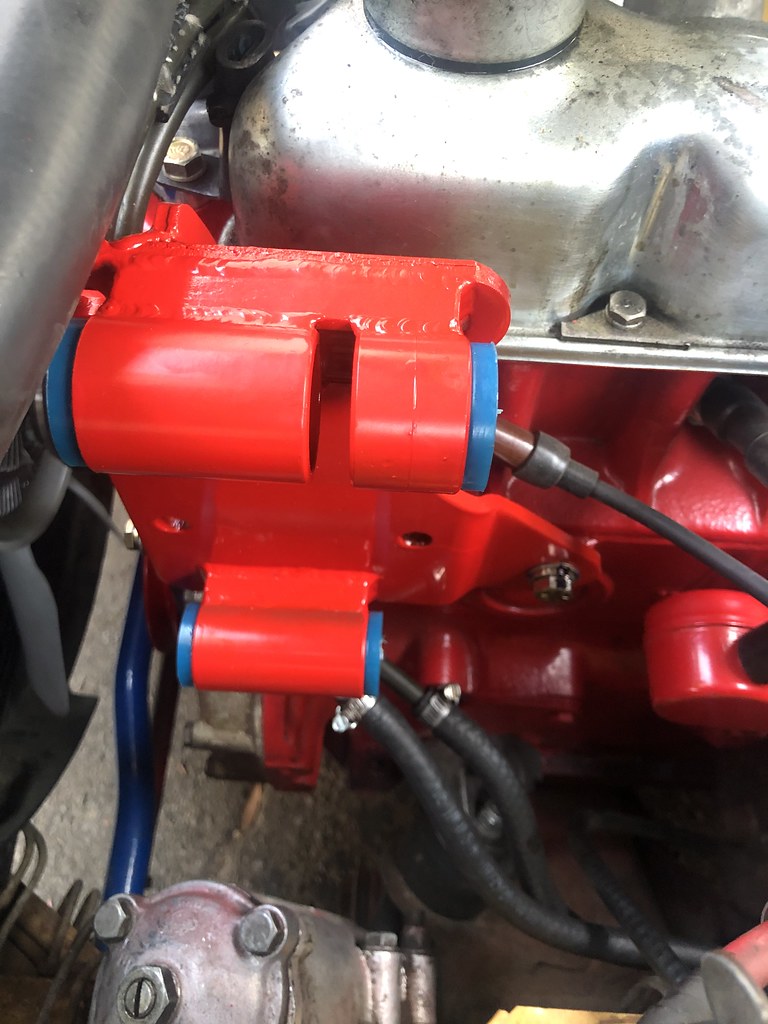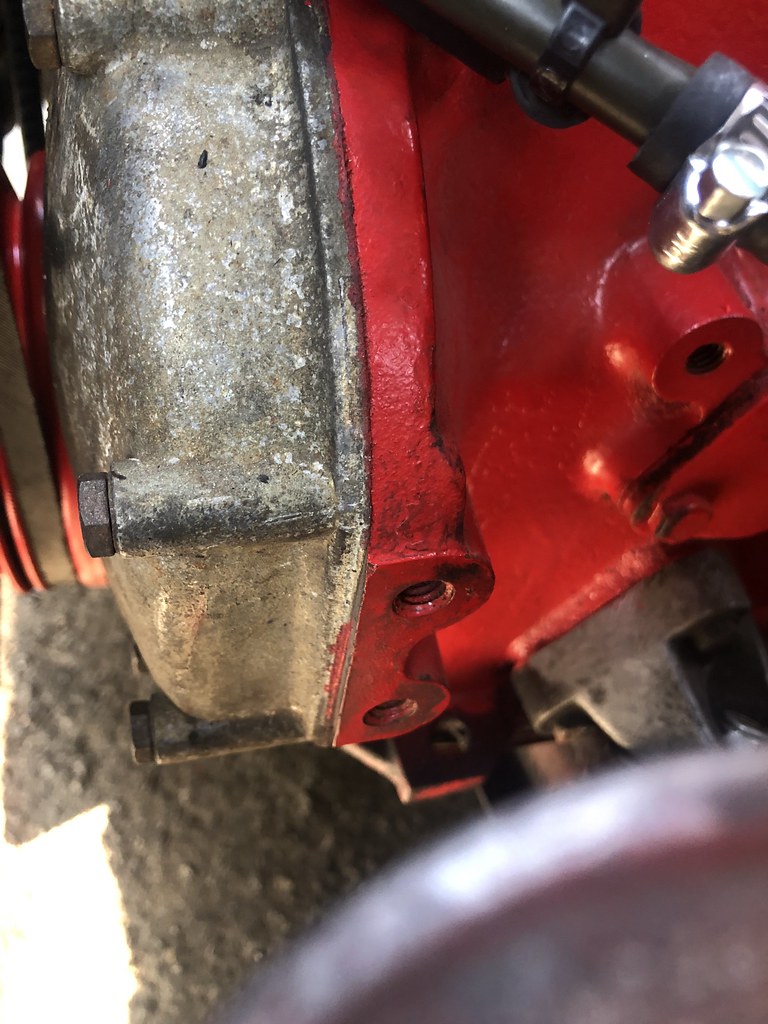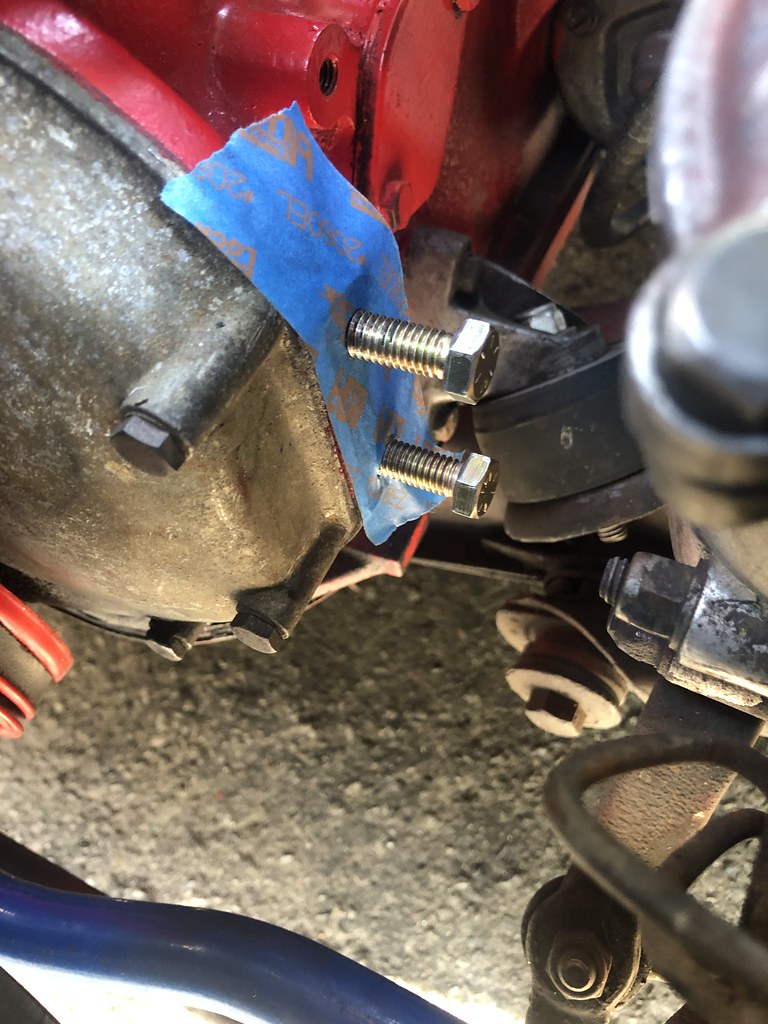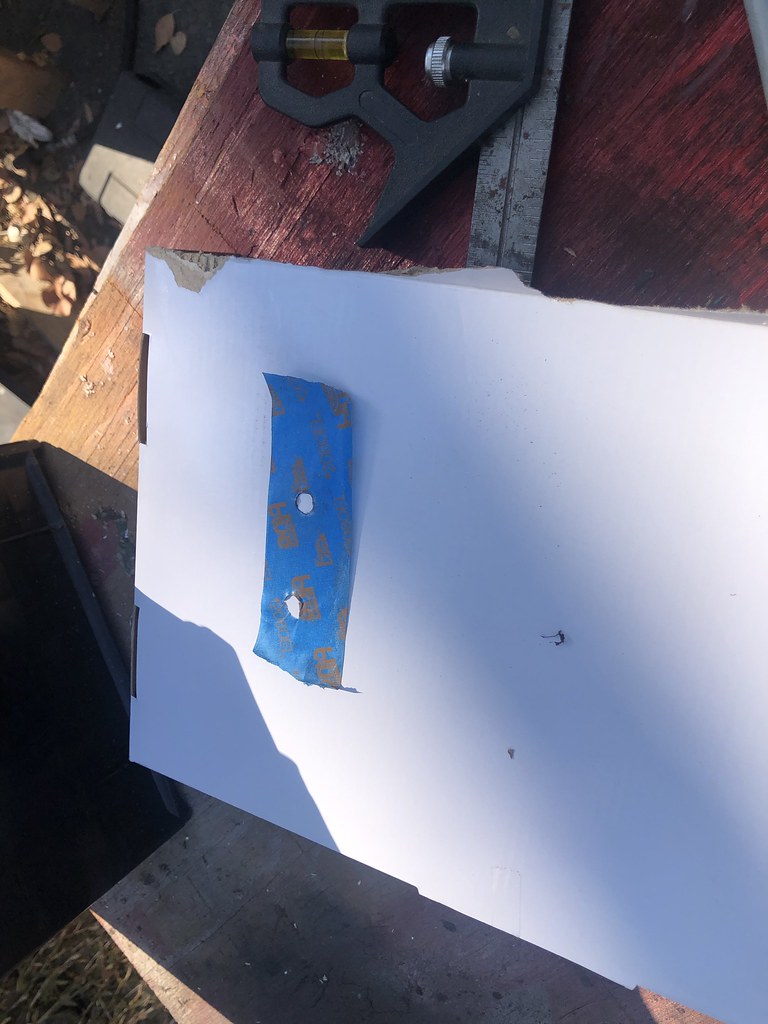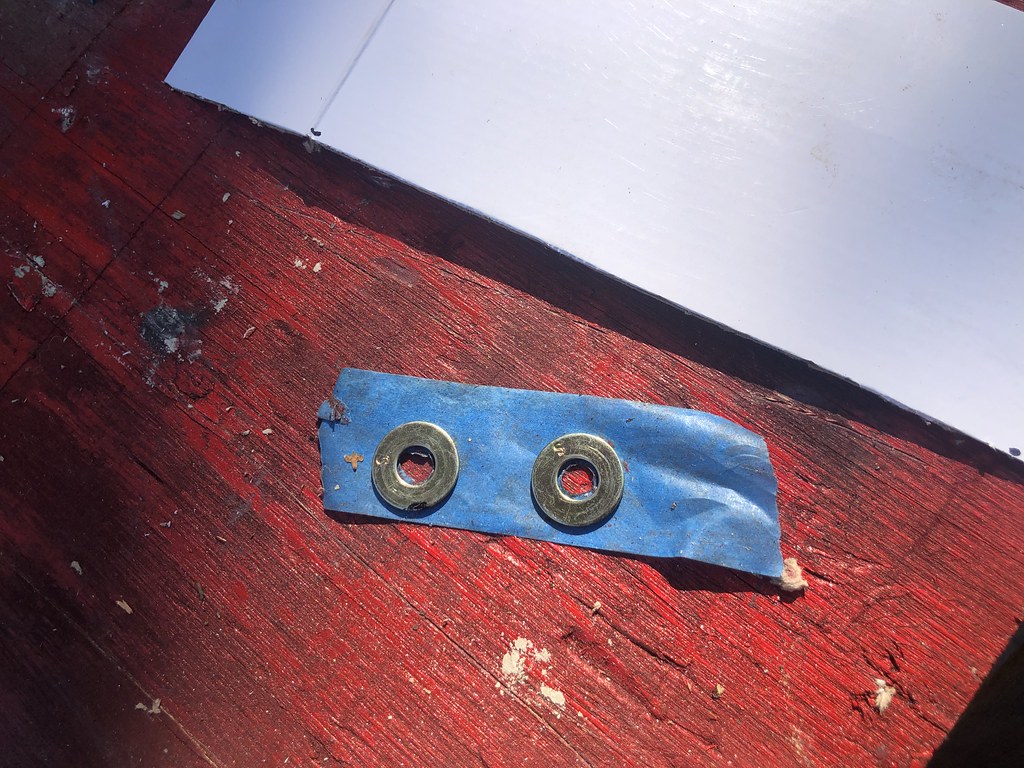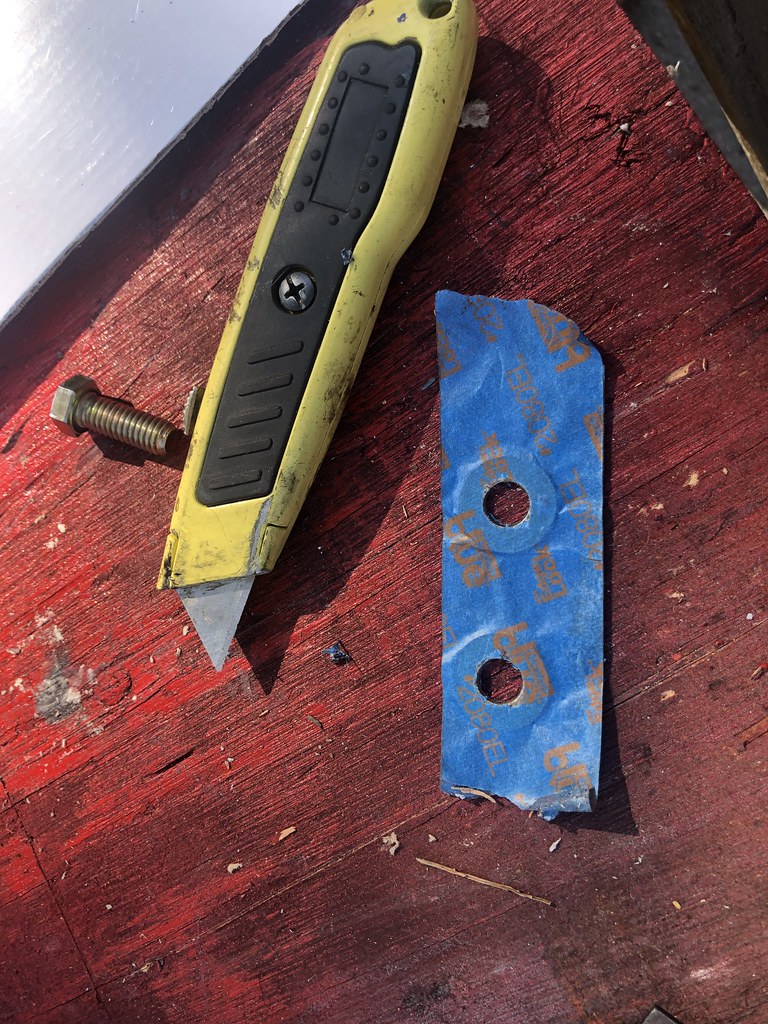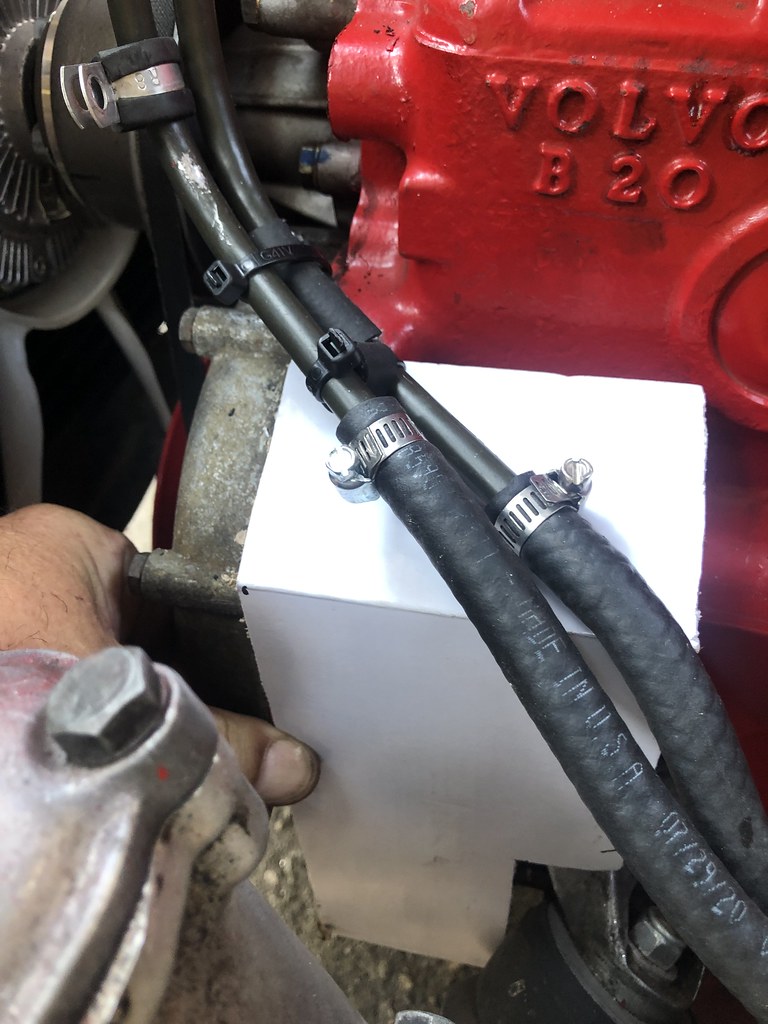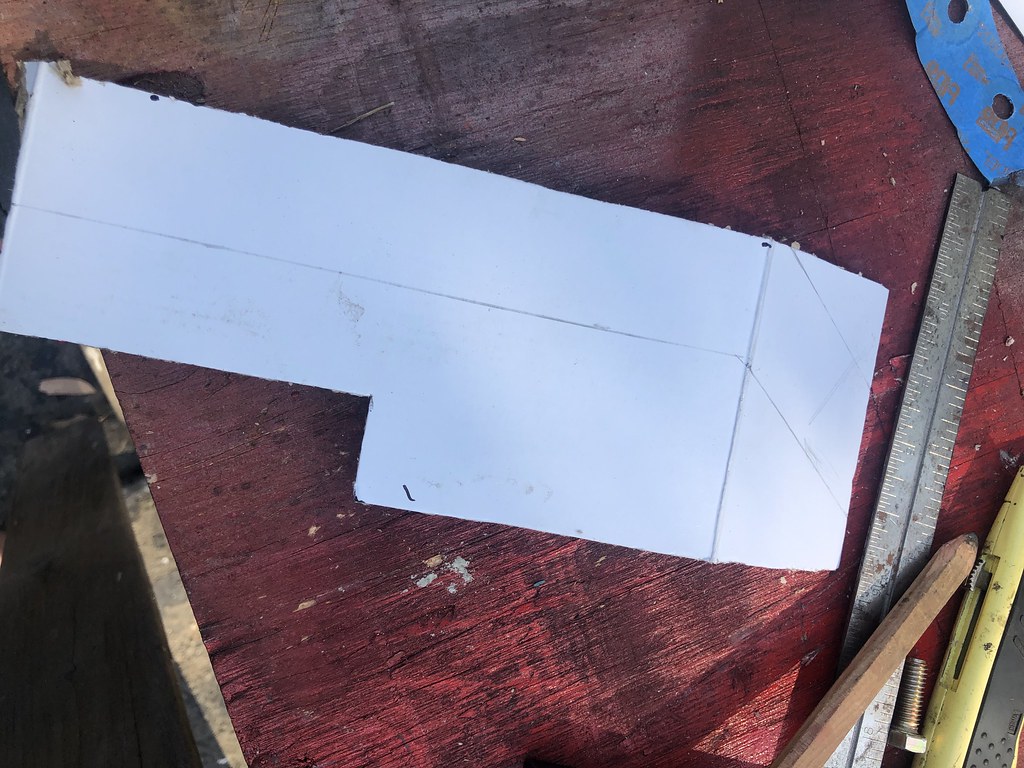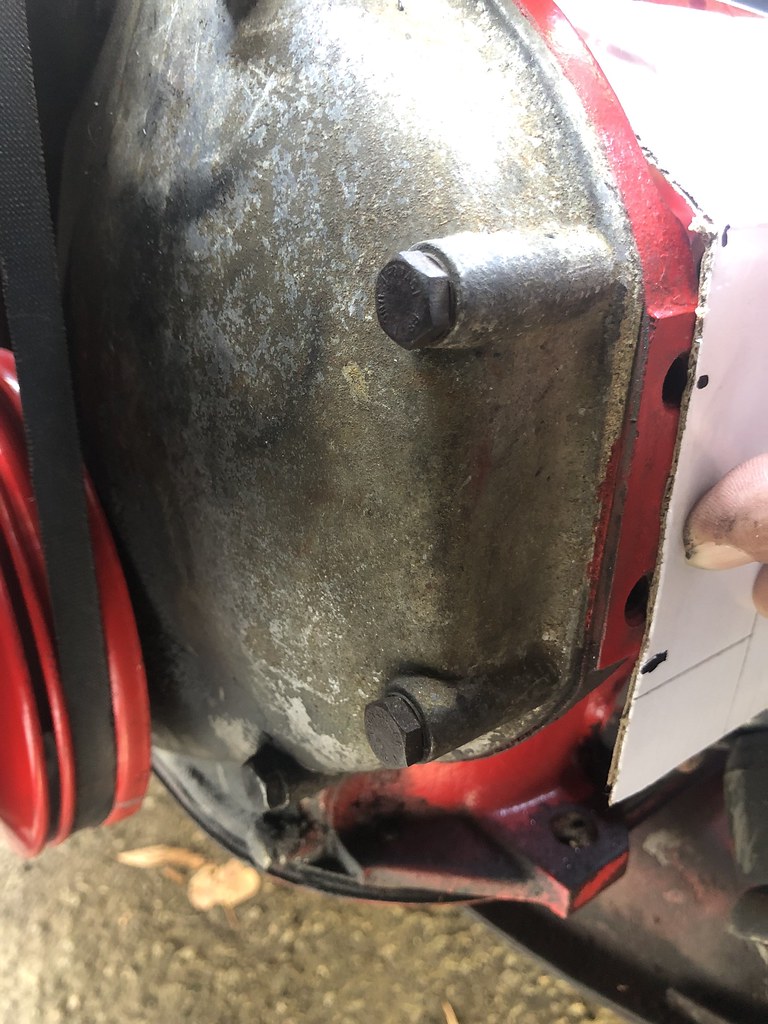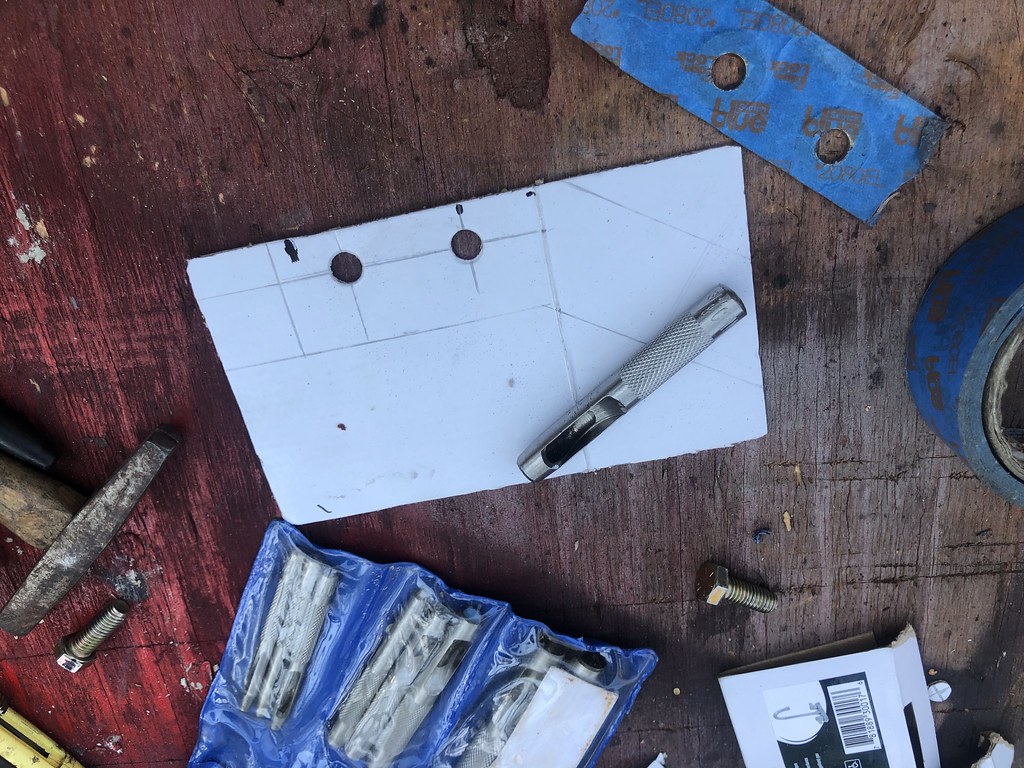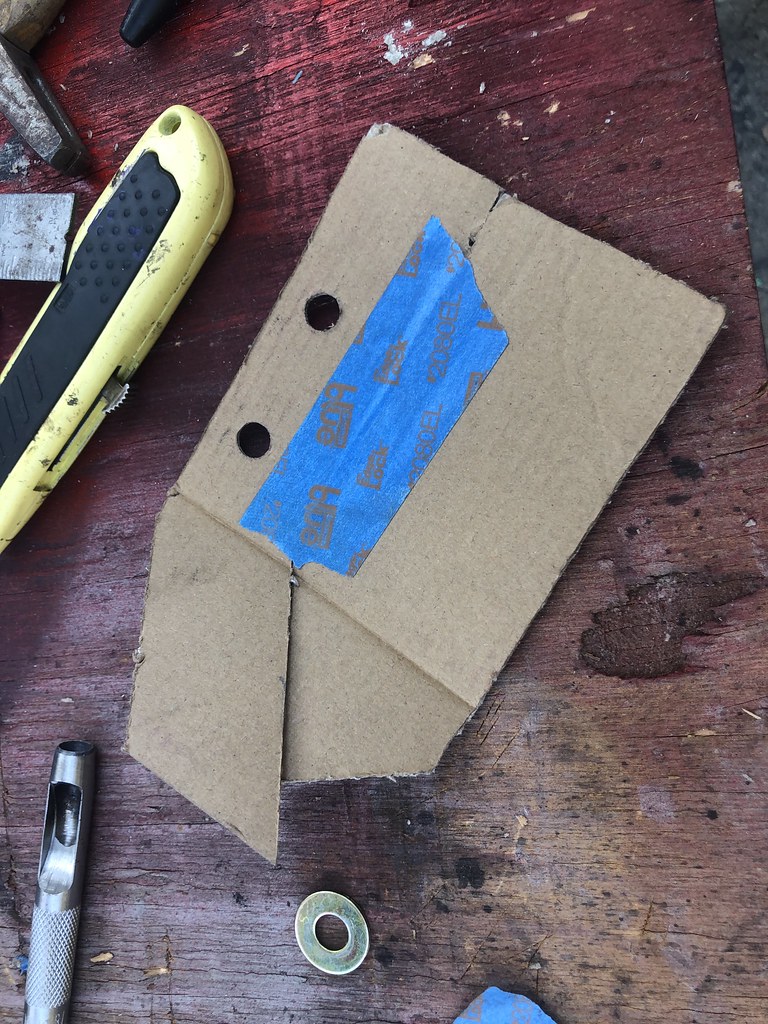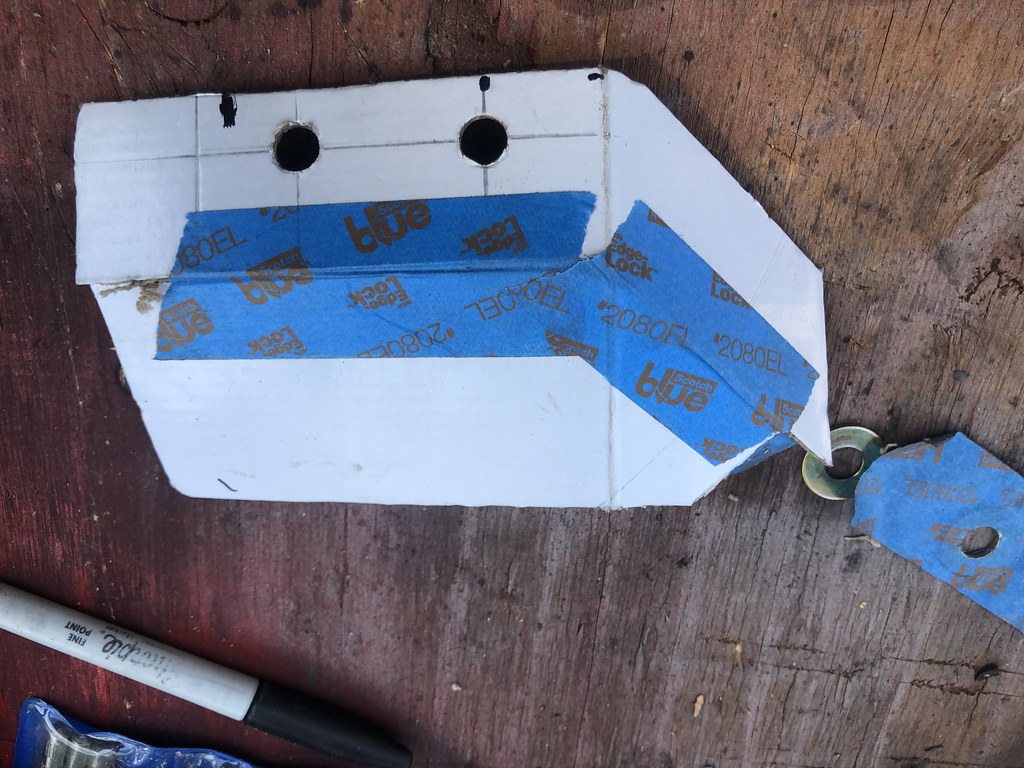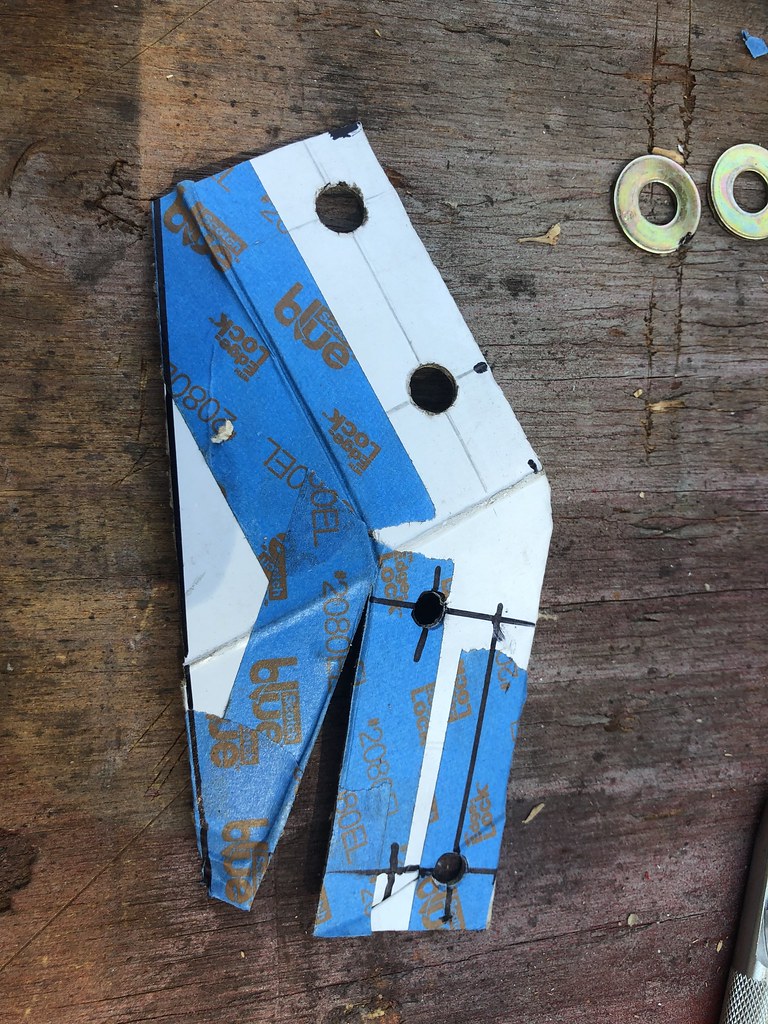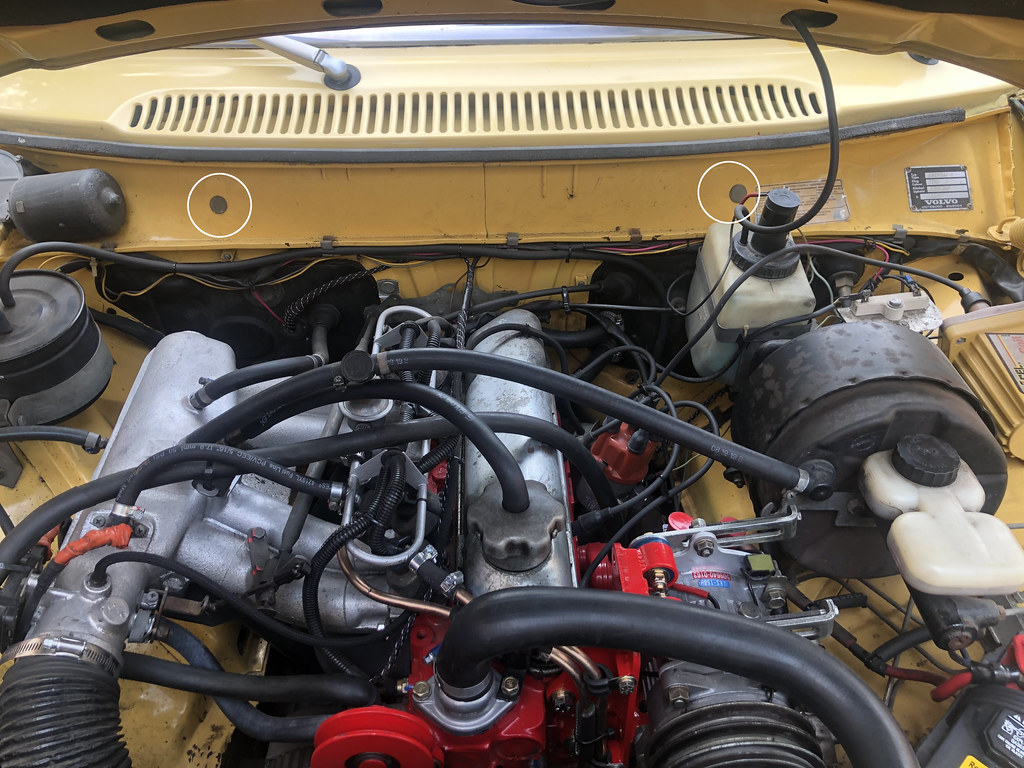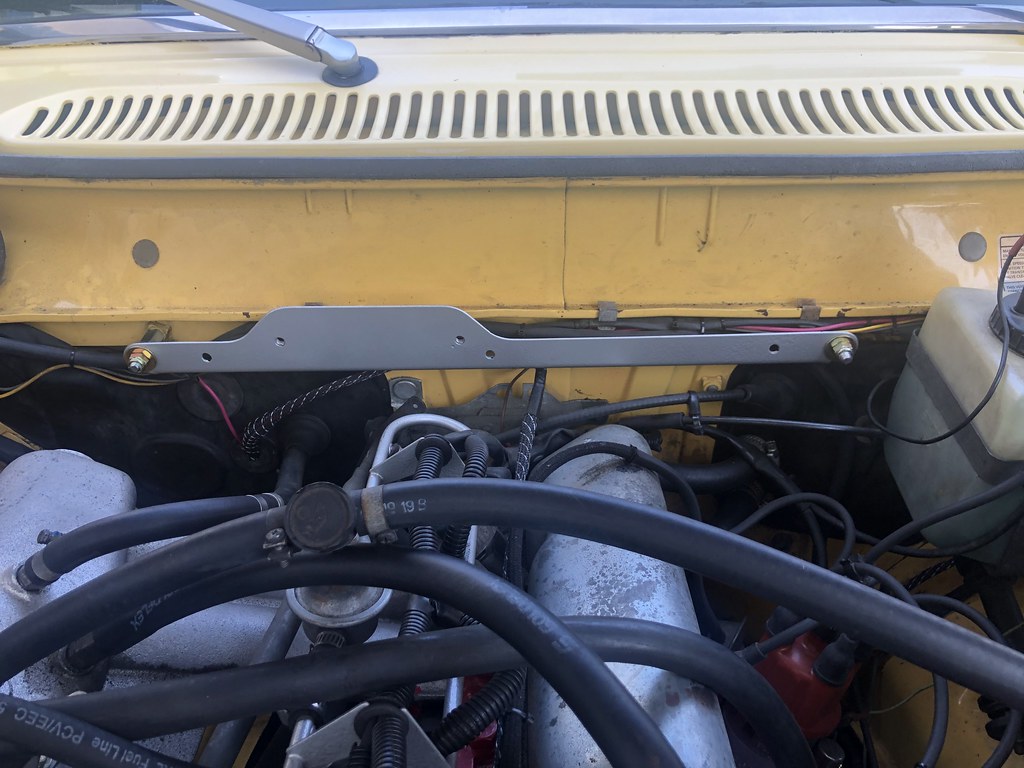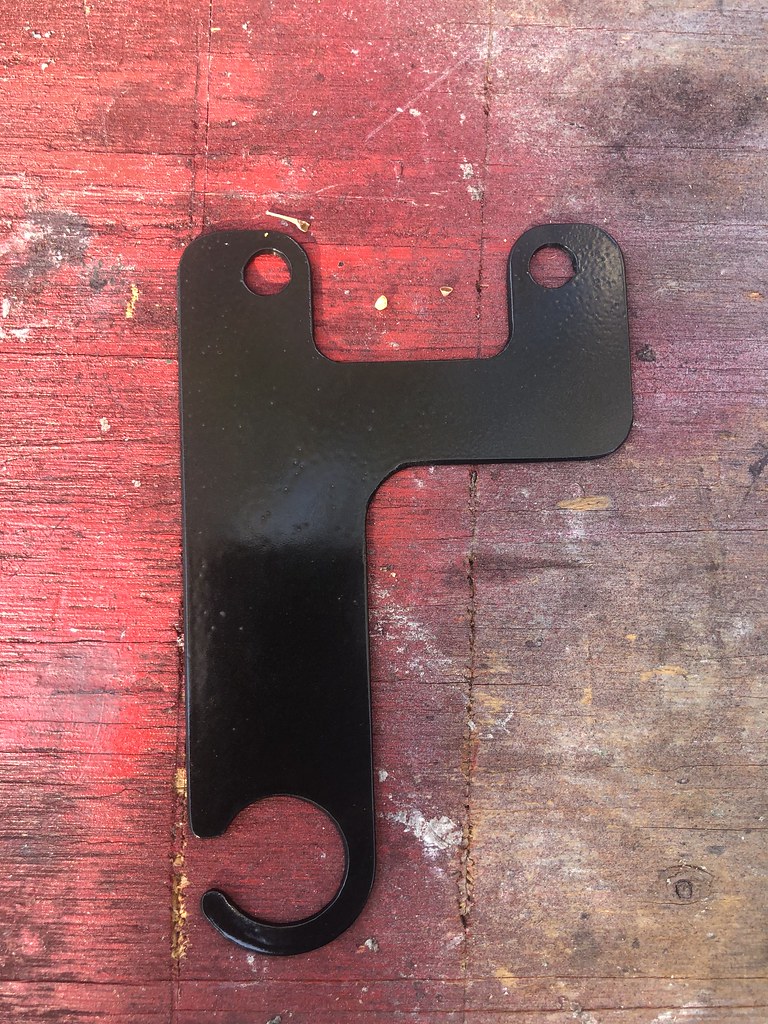I decided that I was not entirely happy with the compressor clearance to the power brake vacuum boost canister. So this morning I removed the compressor mount bracket to start working on new flange tabs that mate the compressor to the mount bracket. Upon removal of the compressor and mount bracket I found some witness marks on the new fuel hard lines. I put my finger under the mount bracket and could feel clearance all around the tubes. So maybe the witness marks are simply the result of fuel line contact during bracket installation. But I want to be sure. So some insurance (scope creep?) is in order in the form of a support bracket for the fuel lines to make sure that they can't move around and come into contact with the bracket, block or compressor which would lead to fuel line failure. This would most definitely not be a good thing!
Shiny scratches are visible on the left most fuel line. The extra bit of fuel hose on the upper line is there to act as an anti-chafe cushion between the two hard lines:
Looking at the side of the engine block showed a couple of existing drilled and 3/8" coarse thread tapped holes conveniently located for mounting a fuel line support bracket on the side of the timing gear case:
It's difficult to reach down in that area to get a good measurement for the hole spacing. Not to worry, I'll be designing this new bracket using my trusty old CAD system. That's Cardboard Aided Design for you non-technical types. So I got out my tool set:
In order to capture the hole pattern / spacing I applied a strip of tape to the side of the block and then pushed a couple of screws thru the tape to punch holes in the tape:
As you can see, the holes aren't very pretty making it difficult to get accurate dimensions from the tape:
Not to worry though, a couple of washers will stick right to the tape:
Followed by a quick fit check back on the side of the block. Now Press the tape down firmly on the washers to locate them securely.
Then remove the tape and washers from the block and return to the work bench. At the work bench lay another piece of tape over the opposite (sticky) side of the tape and the washers are now securely captured in the proper relationship to the holes in the side of the block.
Next take your trusty razor knife or other suitable implement of destruction and open up the holes using the washers as a guide. There you have an accurate hole pattern template:
The next step is to cut a bit of cardboard from the scrap cardboard box that I had laying about (remnant of the garage faucet replacement of a couple of days ago). Review of the shape of the cardboard scrap before rough cutting to shape revealed a conveniently placed fold in the cardboard. Holding the cardboard in place allows marking to start to get a feel for the shape of the new fuel line support bracket:
Back on the work bench the basic outlines of the bracket are marked with a pencil. I use a pencil for this as opposed to a magic marker as it is easier to erase when I screw it up!
Moving back to the block it's time to mark the locations of one of the hole centers and the bottom edge of the new bracket. This time with a Sharpie as it is easier to get a defined point with the pen in these relatively confined spaces than it is with a pencil:
Back on the work bench it is now time to use the tape template to layout and punch the mounting holes in the cardboard:
And then cut the cardboard into shape:
Then move back to the engine for fit check and marking. A couple of Adel clamps will be screwed to the new bracket to secure the fuel lines.:
Since the engine vibrates during operation the cantilevered tab on the bracket will likely act like a tuning fork at some point. So a bit of russeting is required to make sure that it doesn't fatigue over time. Back on the work bench the cardboard cut piece just removed is of convenient size and shape to form the gusset. A quick bit of taping on the back side makes the two pieces whole again:
And tape applied to the outside of the bracket makes it sufficiently strong to maintain position:
This added gusset piece is not yet in the proper shape for the new bracket bend configuration. Back on the engine it's time to mark the gusset for cardboard trim to final shape and return to the work bench for trim subsequently applying tape to both sides at the top of the pattern:
Another fit check shows that the tab at the top of the bracket is not quite long enough to fit screws for the Adel clamps:
Not to worry though as we have more cardboard and tape at our disposal. Here is the bracket taking shape with extra card stock added and holes punched for securing the Adel clamps:
One last fit check is in order:
And then cut the tape free as required to lay the cardboard pattern flat so that it can be traced out later onto a piece of sheet steel:
I think the new support bracket will do its job nicely and it was a good example of how to effectively utilize CAD techniques.
At this point I decided to call it a day for a couple of reasons:
1) My lovely bride said it was approaching noon and offered to make some lunch if I wanted to come inside.
And.
2) It was getting pretty warm out in the sun in the driveway:





